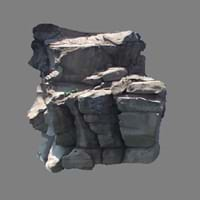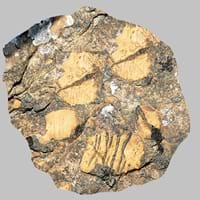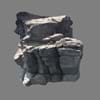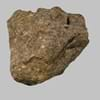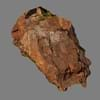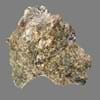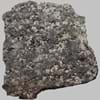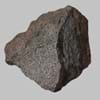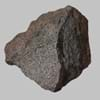Comendite and Diamictite
Definition
Definition
Comendite is a hard, peralkaline igneous rock, a type of light blue grey rhyolite
Diamictite is a sedimentary rock that consists of non-sorted to poorly sorted terrigenous sediment containing particles that range in size from clay to boulders, suspended in a matrix of mudstone or sandstone
History
Origin
Italy
Southern Mongolia
Discoverer
Unknown
Unknown
Etymology
Comendite derives its name from the area of Le Commende on San Pietro Island in Italy
From Greek dia through and meiktós or mixed
Class
Igneous Rocks
Sedimentary Rocks
Sub-Class
Durable Rock, Hard Rock
Durable Rock, Soft Rock
Family
Group
Volcanic
Not Applicable
Other Categories
Medium Grained Rock, Opaque Rock
Coarse Grained Rock, Opaque Rock
Texture
Texture
Porphyritic
Clastic
Color
Blue, Bluish - Grey
Brown, Buff
Maintenance
Less
Less
Durability
Durable
Durable
Water Resistant
Yes
No
Scratch Resistant
Yes
No
Stain Resistant
Yes
No
Wind Resistant
Yes
No
Acid Resistant
Yes
No
Appearance
Foliated
Banded
Uses
Architecture
Interior Uses
Countertops, Decorative Aggregates, Interior Decoration
Decorative Aggregates, Interior Decoration
Exterior Uses
As Building Stone, As Facing Stone, Garden Decoration
As Building Stone, Paving Stone
Other Architectural Uses
Curbing
Curbing
Industry
Construction Industry
Building houses or walls, Cement Manufacture, Construction Aggregate, for Road Aggregate, Landscaping, Making natural cement, Raw material for the manufacture of mortar
As Dimension Stone, Construction Aggregate, for Road Aggregate, Landscaping, Roadstone
Medical Industry
Not Yet Used
Not Yet Used
Antiquity Uses
Artifacts
Artifacts
Other Uses
Commercial Uses
Cemetery Markers
Commemorative Tablets, Creating Artwork, Production of Lime
Types
Types
Rhyolite
Bedded Diamictite and Laminated Diamictite
Features
Very fine grained rock, It is One of the Oldest, Strongest and Hardest Rock
Host Rock for Lead, Is one of the oldest rock
Archaeological Significance
Monuments
Not Yet Used
Not Yet Used
Famous Monuments
Not Applicable
Not Applicable
Sculpture
Not Yet Used
Not Yet Used
Famous Sculptures
Not Applicable
Not Applicable
Pictographs
Not Used
Used
Petroglyphs
Not Used
Used
Figurines
Not Yet Used
Not Yet Used
Fossils
Absent
Present
Formation
Formation
Comendite is a type of Igneous rock which is formed due to cooling and solidification of lava or magma. It may form with or without crystallization, either below the surface as intrusive rocks or on the surface as extrusive rocks.
Diamictite is unevenly sorted terrigenous, non-calcareous sedimentary rock which forms due to weathering of mudstone and sandstone.
Composition
Mineral Content
Albite, Amphibole, Quartz
Calcite, Clay, Feldspar, Micas, Quartz
Compound Content
Al, Fe, Potassium Oxide
Not Available
Transformation
Metamorphism
Yes
No
Types of Metamorphism
Cataclastic Metamorphism, Regional Metamorphism
Not Applicable
Weathering
Yes
Yes
Types of Weathering
Biological Weathering, Chemical Weathering, Mechanical Weathering
Biological Weathering, Chemical Weathering
Erosion
Yes
Yes
Types of Erosion
Coastal Erosion, Water Erosion
Chemical Erosion, Coastal Erosion, Water Erosion
Properties
Physical Properties
Hardness
6-7
2-3
Grain Size
Medium Grained
Coarse Grained
Fracture
Pervasive
Conchoidal to Uneven
Streak
Bluish Black
Light to dark brown
Porosity
Highly Porous
Highly Porous
Luster
Dull
Grainy, Pearly and Vitreous
Compressive Strength
92.40 N/mm2
21
Not Available
Cleavage
Not Available
Not Available
Toughness
2
Not Available
Specific Gravity
2.38
4.3-5.0
Transparency
Opaque
Opaque
Density
Not Available
2.2-2.35 g/cm3
Thermal Properties
Specific Heat Capacity
Not Available
0.75 kJ/Kg K
18
Resistance
Heat Resistant, Impact Resistant
Heat Resistant, Impact Resistant
Reserves
Deposits in Eastern Continents
Asia
China
China, India, Kazakhstan, Mongolia, Russia
Africa
East Africa
Namibia, Nigeria, South Africa
Europe
Italy
Austria, Denmark, Germany, Great Britain, Netherlands, Norway, Poland, Sweden, Switzerland, United Kingdom
Others
Not Yet Found
Not Yet Found
Deposits in Western Continents
North America
Not Yet Found
Canada, USA
South America
Not Yet Found
Brazil, Venezuela
Deposits in Oceania Continent
Australia
Queensland
New South Wales, New Zealand
All about Comendite and Diamictite Properties
Know all about Comendite and Diamictite properties here. All properties of rocks are important as they define the type of rock and its application. Comendite belongs to Igneous Rocks while Diamictite belongs to Sedimentary Rocks.Texture of Comendite is Porphyritic whereas that of Diamictite is Clastic. Comendite appears Foliated and Diamictite appears Banded. The luster of Comendite is dull while that of Diamictite is grainy, pearly and vitreous. Comendite is available in blue, bluish - grey colors whereas Diamictite is available in brown, buff colors. The commercial uses of Comendite are cemetery markers and that of Diamictite are commemorative tablets, creating artwork, production of lime.
